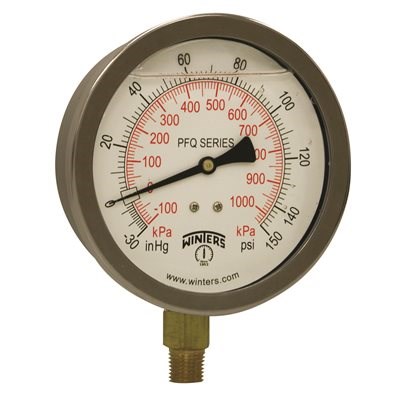Hydrocynus
New Member
Hello all, hope your Sunday is going well. I live in S. Florida and I have a 4" well equipped with a J-Class 1 HP 20 gpm pump set at 80'feet (well is 114 feet, casing ends at 95 ft), PVC sch 40 1-1/4" diam. The pressure tank is a budget Flexcon Defiance 20 gal with bladder set at 38PSI. The pressure switch is set at 40 -60. Installation by a pro on February 2016.
I had short cycling in the pump that destroyed the 5 years old pressure switch. I changed the switch with a new one and it still was cycling fast. So, I emptied the tank, check the pressure in the bladder and it was low at 14 psi, so I inflated at 38 psi and deflated it fully to make sure there was no water blowing out. I saw none. So, I inflated at 38PSI.
The short cycling continued. Putting my hand on the pipe before the one way check valve showed that the water was flushing back into the well creating a hissing noise at the well's riser. So, I changed the one way check valve.
Unfortunately, the pump still cycle short... although not as short as before, so the check valve sorted some issues.
To try to investigate more:
- it takes 8-10 seconds to go from 40 PSI to 60 PSI (gauge is brand new, as I changed that too). By looking at the specs. For a J-class 20gpm 1HP set at 80', I should really get 16 gpm. So, 8.5 seconds should fill the tank with about 2.3 gallons of water. I understand that the tank should have about 5 gallons of useable volume.
- when I empty the tank from 60 psi to 40 psi, I get about 1.2 gallons of water and when I drain it completely, I get about 4.8 gallons.
Here are my questions:
Do you think that my pressure tank is faulty?
Do you think the guy put an oversized pump for my pressure tank? I will try to get a hold of him and see what model of pump I have. If so, I will likely need a much larger pressure tank.
For a tank, I probably will go with the brand names as the water in Florida is pretty bad. So, either an Amtrol or a better (Challenger) Flexcon tank. Probably 8o gallons or above. Because my pump is really oversized for my 3 acres property (we do irrigate), maybe add a Cycle Stop Valve?
Anything else I am missing?
Thank you a lot. ... Oh, and not sure it is related by my less than a year Navien exterior water heater blew its top off (we are on LP)! I have contacted the plumber who installed it. We did not draw hot water during my testing and repairs.
I had short cycling in the pump that destroyed the 5 years old pressure switch. I changed the switch with a new one and it still was cycling fast. So, I emptied the tank, check the pressure in the bladder and it was low at 14 psi, so I inflated at 38 psi and deflated it fully to make sure there was no water blowing out. I saw none. So, I inflated at 38PSI.
The short cycling continued. Putting my hand on the pipe before the one way check valve showed that the water was flushing back into the well creating a hissing noise at the well's riser. So, I changed the one way check valve.
Unfortunately, the pump still cycle short... although not as short as before, so the check valve sorted some issues.
To try to investigate more:
- it takes 8-10 seconds to go from 40 PSI to 60 PSI (gauge is brand new, as I changed that too). By looking at the specs. For a J-class 20gpm 1HP set at 80', I should really get 16 gpm. So, 8.5 seconds should fill the tank with about 2.3 gallons of water. I understand that the tank should have about 5 gallons of useable volume.
- when I empty the tank from 60 psi to 40 psi, I get about 1.2 gallons of water and when I drain it completely, I get about 4.8 gallons.
Here are my questions:
Do you think that my pressure tank is faulty?
Do you think the guy put an oversized pump for my pressure tank? I will try to get a hold of him and see what model of pump I have. If so, I will likely need a much larger pressure tank.
For a tank, I probably will go with the brand names as the water in Florida is pretty bad. So, either an Amtrol or a better (Challenger) Flexcon tank. Probably 8o gallons or above. Because my pump is really oversized for my 3 acres property (we do irrigate), maybe add a Cycle Stop Valve?
Anything else I am missing?
Thank you a lot. ... Oh, and not sure it is related by my less than a year Navien exterior water heater blew its top off (we are on LP)! I have contacted the plumber who installed it. We did not draw hot water during my testing and repairs.
Last edited:

